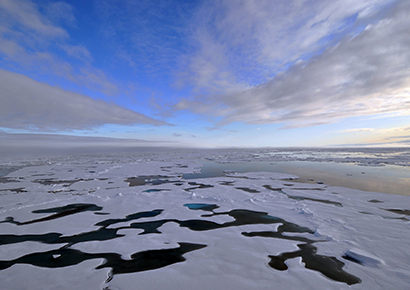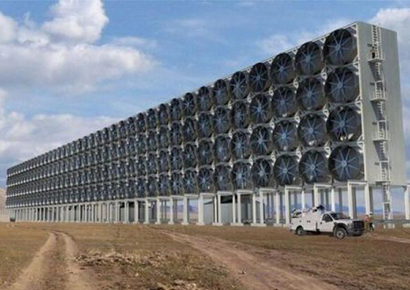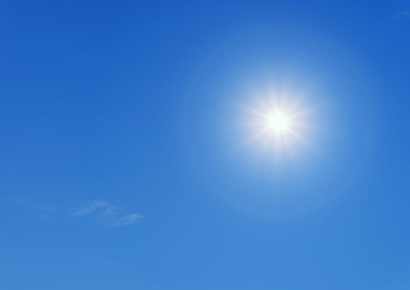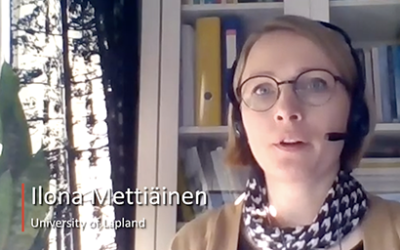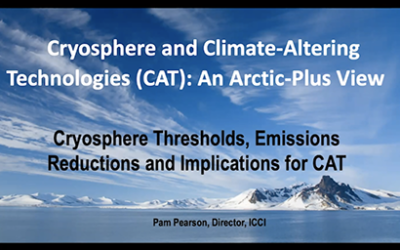Climate-Altering Approaches and the Arctic
The Arctic region plays a key role in the global climate system acting as a carbon sink and a virtual mirror reflecting solar radiation back out into space. The rate of climate change is now significantly greater in the Arctic, which has warmed 2.4 times faster than the rest of the planet over the past 40 years.
According to the United Nations Environment Programme, an Arctic ‘climate tipping point’, or threshold that, when exceeded, leads to permanent changes in the Arctic system – and thus, over time, globally – may have already been reached. This creates a vicious circle in which ice loss reduces the amount of sunlight that is reflected into space, which in turn leads to warming and further ice loss, and accelerates permafrost melting. As a result, large stores of methane, which is almost 30 times more potent than carbon dioxide as a heat-trapping gas, are irreversibly released. If climate-altering technologies were, as is suggested by theoretical research and modelling, capable of slowing or reversing this vicious circle, it makes the region an area of special interest for those considering such climate-altering technologies to cool not only the Arctic but the entire global climate.
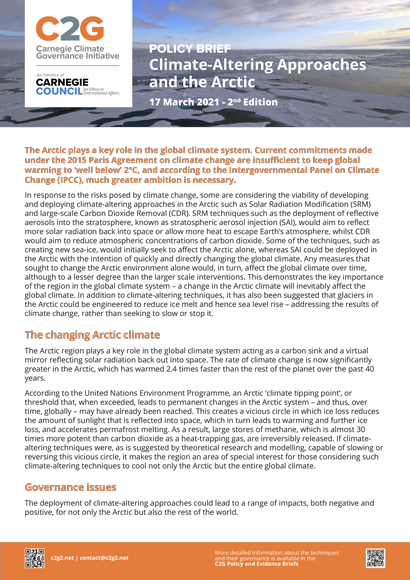
Publications
- 2 August 2021 Evidence Brief: Climate-altering Approaches and the Arctic
- 17 Mar 2021 Policy Brief: Climate-Altering Approaches and the Arctic (中文) (Français) (Español) (Pусский)
Blogs

Faith, climate-altering technologies, and the Arctic
Guest post by Maria Hammershøy, Secretary-General of Caritas Denmark

Climate-altering technologies in the Arctic: time for a global discussion on governance
by Celine Novenario and Cynthia Scharf
Videos
C2GLearn Webinar: Climate-altering approaches and the Arctic – Ilona Mettiäinnen
C2GLearn WebinarClimate-altering approaches and the Arctic – Ilona MettiäinnenIn this presentation, Ilona Mettiäinnen (University of Lapland) discusses Arctic viewpoints to the governance of climate-altering approaches. This presentation was one of the expert...
C2GLearn Webinar: Climate-altering approaches and the Arctic – Douglas MacMartin
C2GLearn WebinarClimate-altering approaches and the Arctic – Douglas MacMartinIn this presentation, Douglas MacMartin (Cornell University) discusses which carbon dioxide removal and solar radiation modification approaches may be applicable to the Arctic. This...
C2GLearn Webinar: Climate-altering approaches and the Arctic – Pam Pearson
C2GLearn WebinarClimate-altering approaches and the Arctic – Pam PearsonIn this presentation, Pam Pearson (International Cryosphere Climate Initiative) talks about the cryosphere and climate-altering technologies, looking in particular at the implications of...
